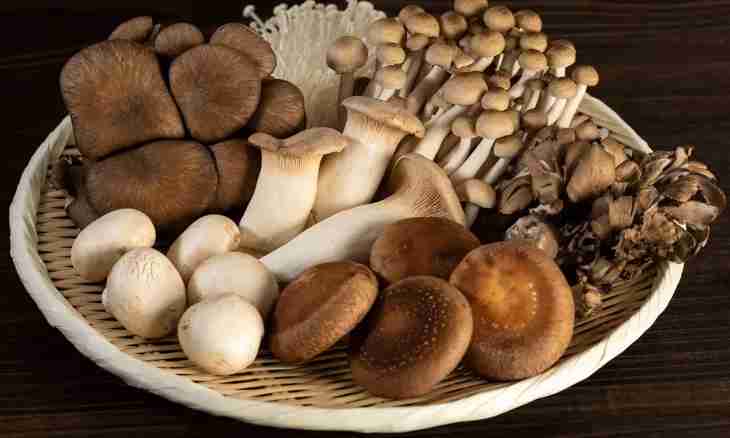The standard classification of mushrooms in biology does not exist yet, however they can be classified by various parameters. And in the middle of last century the mushrooms carried to the kingdom of plants. But approximately in 1970 the scientists decided to allocate the certain kingdom — mushrooms.
All mushrooms unite in childbirth which, is subdivided into types. And types in turn are divided into subspecies or families which can be classified by the following parameters: • Under the terms of growth.
- On internal structure of a sporiferous layer.· in structure and to external signs.
- On nutritious and to tastes, usefulness. • On ability to fructify at different times year.· on ways of receiving nutrients from the environment.
Types of mushrooms
When determining such concept as a kind of mushrooms, it is possible to divide them into wild-growing and cultivated. All wild-growing mushrooms can be divided into three categories: edible, conditionally edible and poisonous. All cultivated mushrooms are edible, for example, champignons and oyster mushrooms belong to them.
Useful properties of wild-growing mushrooms
It is necessary to refer availability in them of carbohydrates, proteins, mineral salts, phosphorus, vitamins of groups A and B useful to cells of a brain and bone tissue to valuable properties of forest mushrooms. And on phosphorus content the mushrooms take three times the place after seafood. Mushroom protein (mikoprotein) on the structure is close to meat, but its assimilation in a human body happens much more slowly as he is imprisoned in covers through which digestive enzymes badly get. For this reason it is not recommended to include mushrooms in the diet more than four times a week. Cepes are considered as the most nutritious. They contain not only protein, but also lecithin, sulfur, polysaccharides, ergotionein. Cepes promote increase in the general tone of an organism,
Useful properties of the cultivated mushrooms
Champignons contain more than 20 amino acids among which there are acids, irreplaceable for a human body: cysteine, cystine, tryptophane, methionine, threonine, phenylalanine and lysine. It is considered that consumption of champignons reduces risk of development of atherosclerosis and probability of developing of a heart attack. In traditional medicine champignons are also used for decrease in level of cholesterol in blood. On the content of vitamins of groups A, B and PP of an oyster mushroom do not concede to many fruit and leaves of a green salad. The regular use of oyster mushrooms (two-four times a week) promotes suppression of development of tumors and decrease in level of cholesterol. At the same time the oyster mushroom is a low-calorie mushroom with the high content of protein, it can be used at observance of diets for weight loss to compensate a lack of protein of an organism.
